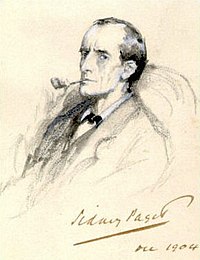 It’s been a while since I’ve celebrated Columbus Day. I think there may be only one nationwide institution that possibly still does: elementary school. Do you remember those days? Along came the second Monday in October and we were folding captain’s hats out of newspaper and collaging the Nina, the Pinta, and the Santa Maria with red, white, brown, and blue construction paper.
It’s been a while since I’ve celebrated Columbus Day. I think there may be only one nationwide institution that possibly still does: elementary school. Do you remember those days? Along came the second Monday in October and we were folding captain’s hats out of newspaper and collaging the Nina, the Pinta, and the Santa Maria with red, white, brown, and blue construction paper.It wasn’t until middle school when I started hearing criticism about Columbus, but those were just rumors. By high school the censure was blatant. In confusion, I consulted two textbooks and tried to find the truth about the hero explorer we’d celebrated for over five hundred years. My search yielded vast contradictions: one book said Columbus was the greatest man ever and completely flawless, while the other book condemned him as a grasping slave-driver led by gold and glory.
Most events in history are questioned sometime or another; the last couple of decades has been the time to question Columbus. The big parade down Fifth Avenue has suddenly been replaced by Indigenous Peoples Day. The portrait of Columbus as the ideal, brave seaman has been disputably replaced by Columbus as a ruthless, gold and power hungry man corrupted by the selfish and pilfering pursuits of the world.
As Latter-Day Saints, forming a scholarly position about Columbus is a difficult task. When the cynical world throws the Taino enslavement on the evidence table, it’s almost impossible to retain the image of the man led by the Spirit of God who Nephi saw in a vision. However, the study of some of
 Columbus’ own writings, while not necessarily yielding him flawless, give substantial evidence that Columbus’ original motives were upstanding. Although later in life his motives may have been less pure, over time the facts have become pretty hazy. We don’t know exactly how to tally Columbus’ rights and wrongs throughout his life, but his writings at the end of his life make it clear that he regretted any wrong he had done and make it clear that his original intentions were good.
Columbus’ own writings, while not necessarily yielding him flawless, give substantial evidence that Columbus’ original motives were upstanding. Although later in life his motives may have been less pure, over time the facts have become pretty hazy. We don’t know exactly how to tally Columbus’ rights and wrongs throughout his life, but his writings at the end of his life make it clear that he regretted any wrong he had done and make it clear that his original intentions were good.In 1492, a Whole New World wasn’t a hit song from a Disney animated feature--it was a reality, a reality that had always been there waiting to be discovered. The New World was enticing and alluring. As Columbus wrote, “None had heard of this other world, let alone seen it, and none could begin to comprehend what its discovery might mean for their own familiar universe.” Explorers like Columbus were congratulated as heroes for doing what no one had done before.
After seeking funding and support for years in order to undertake
 a voyage to find a west-bound commercial route to Asia, Columbus finally won the favor of the Spanish monarchs Ferdinand and Isabella. One can only attempt to imagine the freedom and exhilaration 39-year-old Columbus must have felt in anticipation of his very own expedition as he set sail.
a voyage to find a west-bound commercial route to Asia, Columbus finally won the favor of the Spanish monarchs Ferdinand and Isabella. One can only attempt to imagine the freedom and exhilaration 39-year-old Columbus must have felt in anticipation of his very own expedition as he set sail.Yet just four years after his great triumph of October 12, 1492, Columbus’ name was already being condemned and sullied with charges made against him by other Europeans in the Indies. Here the history starts to get a little muddy. According to Columbus’ record, it was his own settlers who were sending evil reports of him back to Europe while they where the ones making cruel and unjust demands of the Taino natives.
Although Columbus’ later years are hard to understand, his writings at least make his original intentions clear. His letter dated at sea February 15, 1493 makes only a single mention of the prospects of “mines of metals” and only at the very end of the letter. The entirety of the letter describes first and foremost the islands themselves and the native inhabitants. Although he does relate to them (both the islands and the peoples) with a distinct attitude of ownership, he talks neither of riches nor of the possibility of enslaving the natives for the purpose of serving the Europeans. His interests and descriptions in this letter enthusiastically address geographical and navigational details as well as an earnest interest in scenery, foliage, animal life, and other diverse and beautiful miracles of nature. This is not the account of a man whose instinctive intentions are selfish and barbaric.
 By 1503, Columbus’ motives had changed. A letter from this year enumerates the woes he has suffered because his governing power in the New World has been restrained. He also speaks much of the riches that the land contains and Spain’s potential in gleaning them. The overall difference in tone and feeling between Columbus’ writings in 1492 and 1503 are vast. Certainly Columbus must have endured a lot of suffering and frustration during those eleven years. Indeed, he himself states the change: “I came to serve at the age of twenty-eight years, and now I have not a hair on my body that is not gray, and my body is infirm.” From the West Indies less than a year before his death, Columbus writes, “I am so ruined … Heaven have mercy upon me, and may the earth weep for me … Alone in my trouble, sick, in daily expectation of death … my soul will be forgotten if it here leaves my body. Weep for me, whoever has charity, truth, and justice.”
By 1503, Columbus’ motives had changed. A letter from this year enumerates the woes he has suffered because his governing power in the New World has been restrained. He also speaks much of the riches that the land contains and Spain’s potential in gleaning them. The overall difference in tone and feeling between Columbus’ writings in 1492 and 1503 are vast. Certainly Columbus must have endured a lot of suffering and frustration during those eleven years. Indeed, he himself states the change: “I came to serve at the age of twenty-eight years, and now I have not a hair on my body that is not gray, and my body is infirm.” From the West Indies less than a year before his death, Columbus writes, “I am so ruined … Heaven have mercy upon me, and may the earth weep for me … Alone in my trouble, sick, in daily expectation of death … my soul will be forgotten if it here leaves my body. Weep for me, whoever has charity, truth, and justice.”No one knows the exact truth of what happened on Columbus’
 voyages and we especially don’t know the truth of his personal intentions. We do know that there were some terrible and devastating results to the citizens of the world in the fifteenth century and then other results that are beneficial to our present day—like the development and settlement of two new continents. There must be some way to celebrate Columbus and his efforts to explore unknown corners of the world without being Indigenous People haters. Christopher Columbus is perhaps defended best in his own testimony: “I did not sail upon this voyage to gain honor or wealth.”
voyages and we especially don’t know the truth of his personal intentions. We do know that there were some terrible and devastating results to the citizens of the world in the fifteenth century and then other results that are beneficial to our present day—like the development and settlement of two new continents. There must be some way to celebrate Columbus and his efforts to explore unknown corners of the world without being Indigenous People haters. Christopher Columbus is perhaps defended best in his own testimony: “I did not sail upon this voyage to gain honor or wealth.”













No comments:
Post a Comment